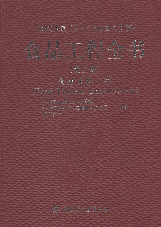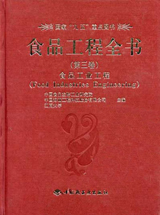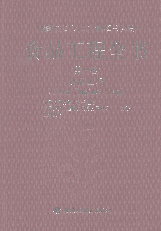
主要责任者: 中国食品发酵工业研究院,中国海诚工程科技股份有限公司,江南大学;萧家捷,尹宗伦;于新华,高福成,徐学平;黄福南
责任方式: 主编;主编;副主编;分卷主编
出版者: 中国轻工业出版社
出版地: 北京
字数: 1400 千字
页码: 3-958
开本: 16
中图分类号: TS201.1
装帧: 精
分辑名:第二卷 食品过程工程
语种:中
定价:160.00
出版时间:2004-04
丛书多卷书否:是
书目简介:本册工具书共收录29条词条。
被引频次:15

主要责任者: 中国食品发酵工业研究院,中国海诚工程科技股份有限公司,江南大学;徐学平
责任方式: 主编;主编
出版者: 中国轻工业出版社
出版地: 北京
字数: 1250 千字
页码: 2-858
开本: 16
中图分类号: TS201.1
装帧: 精
分辑名:第三卷 食品工业工程
语种:中
定价:130.00
出版时间:2004-12
丛书多卷书否:是
书目简介:本册工具书共收录639条词条。
被引频次:7

主要责任者: 中国食品发酵工业研究院,中国海诚工程科技股份有限公司,江南大学;萧家捷,尹宗伦;于新华,高福成,徐学平;高福成
责任方式: 主编;主编;副主编;分卷主编
出版者: 中国轻工业出版社
出版地: 北京
字数: 1200 千字
页码: 3-959
开本: 16
中图分类号: TS201.1
装帧: 精
分辑名:第一卷 食品工程
语种:中
定价:160.00
出版时间:2004-01
丛书多卷书否:是
书目简介:本册工具书共收录228条词条。
被引频次:26